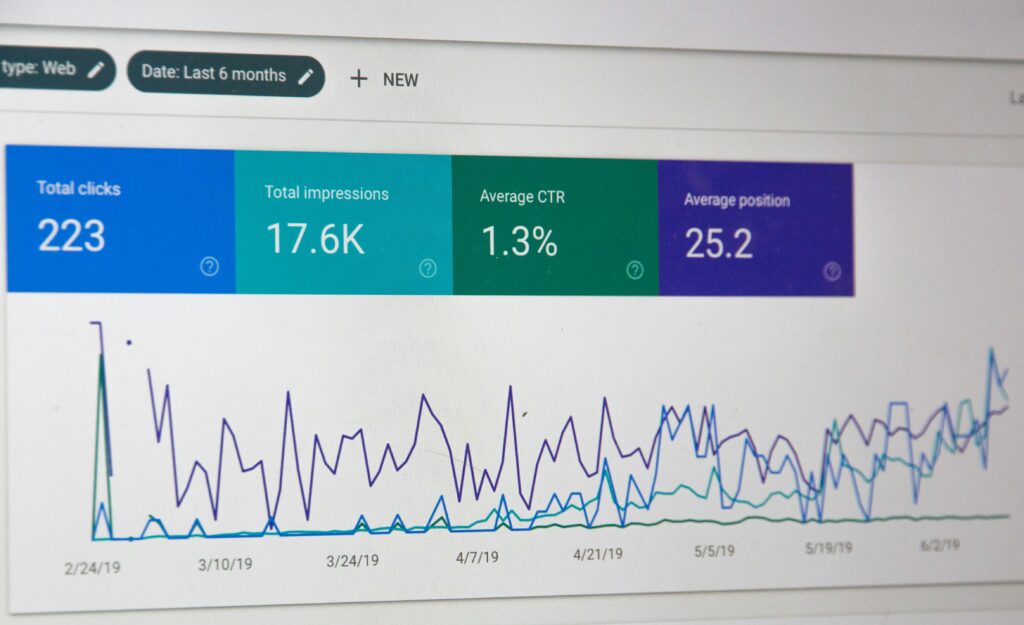
In today’s hyper-competitive business environment, guessing or relying on intuition when making marketing decisions is a risk few can afford. The best-performing marketers today are the ones who rely on data-driven strategies to guide their efforts. With an abundance of data available, businesses can make informed decisions that boost ROI, optimise campaign performance, and better serve their customers. In this article, we’ll walk you through the importance of data-driven marketing, how to collect and analyze data effectively, and actionable steps to make smarter, more informed decisions for your business.
What is Data-Driven Marketing?
Data-driven marketing refers to using data collected from customer interactions and third-party sources to gain insights and make informed marketing decisions. By analyzing this data, businesses can:
Understand customer behaviors and preferences.
Predict future trends and consumer needs.
Tailor marketing campaigns to specific audience segments.
Optimize strategies for improved performance.
The end goal is to eliminate guesswork, allowing marketers to base their decisions on measurable facts rather than assumptions.
Why Data-Driven Marketing Matters
Improved Accuracy and Precision Data-driven marketing allows businesses to target specific audience segments with precision, reducing wasteful spending on irrelevant ads and content. Accurate targeting means delivering the right message to the right person at the right time, which increases the likelihood of conversions.
Optimized Budgeting Instead of spending on marketing tactics that may not work, data-driven decisions help allocate your budget to strategies that have been proven to deliver results. You can test campaigns, identify what works best, and funnel more money into those successful strategies, ensuring a higher return on investment (ROI).
Personalization Consumers today expect personalized experiences from brands. Data allows you to tailor messages, offers, and content to individuals based on their behavior, preferences, and demographics. This results in higher engagement rates, better customer satisfaction, and long-term loyalty.
Predictive Insights Leveraging data doesn’t just help you understand your current customers; it also gives you the ability to predict future behavior. Using predictive analytics, you can forecast future trends and customer actions, helping you stay ahead of the competition.
Identify the Right Data Sources
To make informed decisions, you need access to relevant and reliable data. Some valuable data sources include:
Website Analytics: Tools like Google Analytics help track traffic sources, user behavior, conversion rates, and more.
Social Media Analytics: Platforms like Facebook, Instagram, and LinkedIn provide insights into engagement, reach, and audience demographics.
Customer Relationship Management (CRM) Software: Track customer interactions, sales pipelines, and the customer journey.
Surveys and Feedback: Direct input from your customers can provide qualitative data, which is just as important as quantitative numbers.
Email Campaign Analytics: Measure open rates, click-through rates, and conversion metrics.
Collect and Organize Your Data Once you know where your data is coming from, it’s essential to collect it systematically. Integrate tools and platforms that allow seamless data collection in one place for easy access and analysis. For example:
Use a CRM system to centralize customer data.
Integrate your website analytics with your social media platforms.
Create dashboards to visualize important KPIs.
This process helps you avoid data silos, which can make insights less actionable.
Analyze and Interpret the Data
Having data is one thing; understanding it is another. To gain meaningful insights:
Segment your data: Break down data into different segments such as age, location, customer journey stage, or purchasing behavior.
Look for trends and patterns: Identify recurring trends that can help optimize your strategy.
Use A/B testing: Test different marketing tactics on a small scale to see which ones work best. For instance, test two versions of an email campaign to discover which one garners better engagement.
Leverage predictive analytics: Use machine learning tools to predict future customer behaviors based on past trends.
Make Data-Driven Adjustments
Once you’ve analyzed the data, it’s time to apply your findings to adjust your marketing strategy. Here’s how:
Tweak campaigns: Optimize ad copy, targeting, and budget allocation based on the performance data.
Personalize content: Adjust your messaging and offers based on customer behavior and preferences.
Retarget effectively: Use data from previous interactions to retarget customers who didn’t convert the first time.
Remember, data-driven marketing is an iterative process. You should constantly monitor your campaigns, adjust them, and experiment with new tactics based on the latest insights.
Tools for Data-Driven Marketing
To succeed with data-driven marketing, you’ll need the right tools to help you gather, analyze, and act on your data. Here are some essential tools to consider:
Google Analytics: For tracking website performance and user behavior.
HubSpot: A CRM platform that offers detailed analytics on customer interactions, sales, and marketing campaigns.
Tableau: A powerful data visualization tool that helps turn complex data into clear, actionable insights.
Hootsuite or Buffer: Social media management tools with robust analytics features.
Mailchimp: Provides email marketing analytics for tracking open rates, click-throughs, and conversions.
Challenges in Data-Driven Marketing
While data-driven marketing has many benefits, there are also challenges you may encounter:
Data Overload: With so much data available, it can be overwhelming to know which metrics matter most. Focus on key KPIs that align with your goals.
Data Accuracy: Incorrect or incomplete data can lead to wrong decisions. Ensure data cleanliness and accuracy by regularly auditing your systems.
Privacy Concerns: With data collection comes the responsibility of handling it ethically. Always comply with privacy regulations like GDPR or CCPA, and be transparent with customers about how their data is used.
Conclusion
Data-driven marketing isn’t just a trend; it’s a necessity for businesses that want to stay competitive and relevant in today’s market. By leveraging data effectively, you can make informed decisions that drive growth, improve customer experiences, and maximize your marketing efforts.
Start small—track your key metrics, analyze them, and make adjustments to your strategy. As you get comfortable, you’ll be able to scale your data-driven efforts to optimize your entire marketing strategy like a pro.

Not only will a network administrator keep you safe, but you will not have to waste as much time going through unwanted emails. Protect yourself before the inevitable happens.